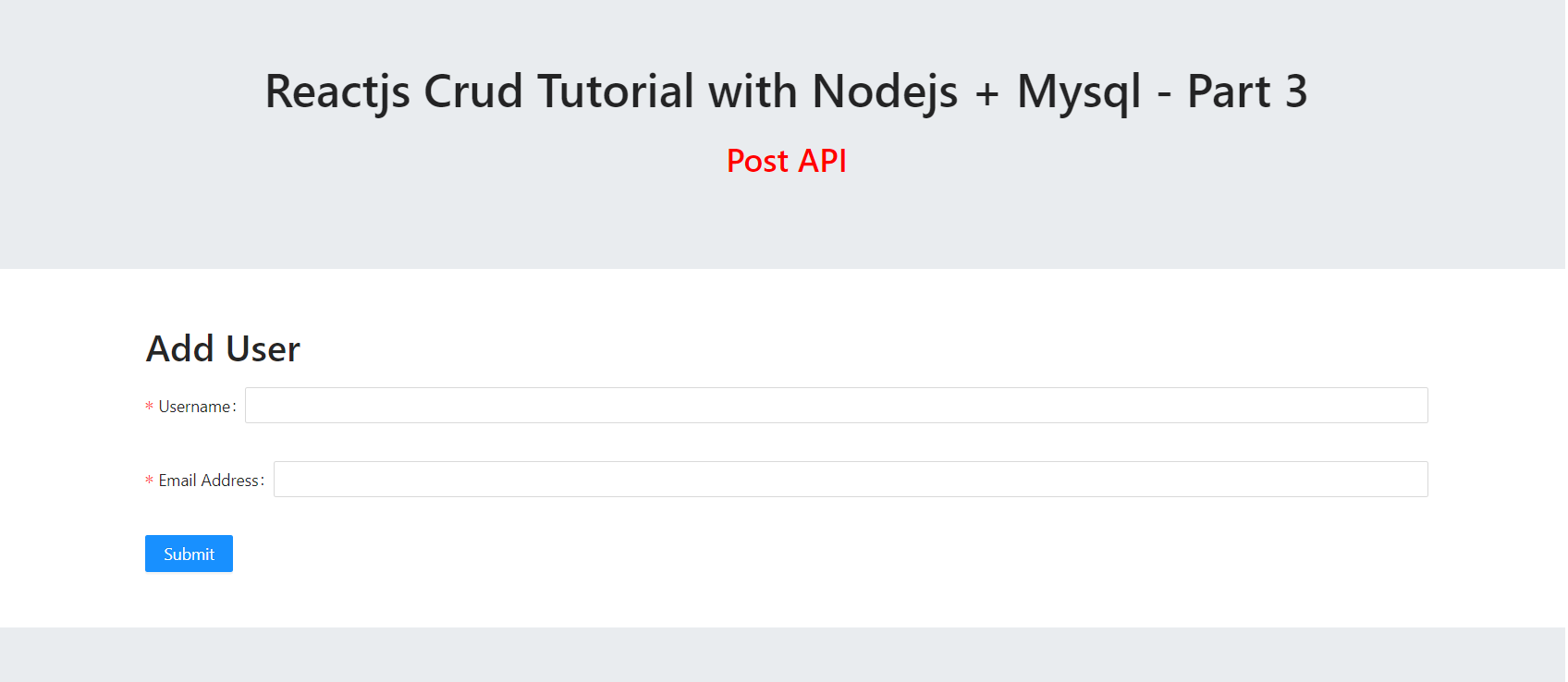Hello to all, welcome back to my blog. Today in this blog post, I am going to tell you, Reactjs Crud Tutorial with Nodejs + Mysql – Part 3.
In this part, we will make post api.
For reactjs new comers, please check the below link:
Friends now I proceed onwards and here is the working code snippet for Reactjs Crud Tutorial with Nodejs + Mysql – Part 2 and please use this carefully to avoid the mistakes:
1. Firstly friends we need fresh reactjs setup and for that we need to run below commands into our terminal and also w should have latest node version installed on our system:
npx create-react-app reactcrud cd reactcrud npm start // run the project
2. Now we need to run below commands to get bootstrap(for good layout), antd modules into our react js app:
npm install antd npm install bootstrap --save npm install axios --save npm start
3. Now friends, after are done with commands, now please open reactcrud/src/App.js file and add below code inside it:
import React from 'react';
import './App.css';
//bootstrap
import 'bootstrap/dist/css/bootstrap.min.css';
//Adding antd modules and style
import { Button, Form, Input } from 'antd';
import "antd/dist/antd.css";
//axios for api request
import axios from 'axios';
class App extends React.Component {
render() {
// Add user form with functionality
const AddUser = () => {
const [form] = Form.useForm();
const onFinish = (values) => {
//Post API
axios.post('NodejsAPIURL', values
).then(res=>
{
//Success message
}
);
};
return (
<Form
form={form}
name="basic"
initialValues={{
remember: true,
}}
onFinish={onFinish}
>
<Form.Item
label="Username"
name="username"
rules={[
{
required: true,
message: 'Please input your username!',
},
]}
>
<Input />
</Form.Item>
<Form.Item
label="Email Address"
name="email"
rules={[
{
required: true,
type: 'email',
message: 'Please input your email address!',
},
]}
>
<Input />
</Form.Item>
<Form.Item>
<Button type="primary" htmlType="submit">
Submit
</Button>
</Form.Item>
</Form>
);
};
return (
<div className="maincontainer">
<div className="container mb-5 mt-5 text-left">
<h2 className="mb-5mt-5 text-left">Add User</h2>
<AddUser />
</div>
</div>
)
};
}
export default App;
Now we are done friends. If you have any kind of query or suggestion or any requirement then feel free to comment below.
Guys in next video, I will show you, how to save this form data into MySQL database via NodeJS.
Note: Friends, I just tell the basic setup and things, you can change the code according to your requirements. For better understanding and live working must watch video above.
I will appreciate that if you will tell your views for this post. Nothing matters if your views will good or bad.
Jassa
Thanks
